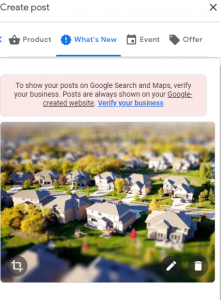See how AI is enhancing contextual advertising, allowing for more precise audience segmentation and improved ad placement.

While Google’s announcement to pump the brakes again on deprecating third-party cookies isn’t exactly a surprise, it’s also not a license for marketers to take their foot off the gas of testing alternative ways to serve relevant ads without cookies.
Much of that focus is around testing all the alternative IDs that have flooded the market. However, more and more forward-thinking marketers are also reallocating some of their budgets to AI-driven contextual advertising that is proving to pack a powerful punch in performance.
The shift toward AI-driven contextual advertising
At first glance, contextual advertising may trigger a “been there, done that” reaction as if it offers nothing new. However, recent advancements in AI-driven contextual advertising are significant and should not be overlooked.
In the past, contextual advertising has been hamstrung by overly rigid standardization and broad categorizations, which was logical at the time for simplifying ad targeting and reducing complexity by classifying individuals into predetermined segments. But, all too often, this approach missed the mark when it came to the nuanced targeting of specific, niche audiences, leading to ads being placed alongside content that did not align with or engage the intended consumer base.
Today, contextual targeting has evolved alongside AI, which now leverages advanced machine learning. AI models can analyze millions of articles across years of data, giving us new access to reach consumers in more specific contextual settings and across more types of media. Advanced AI systems also allow what’s referred to as “unsupervised learning” to autonomously identify patterns in content and consumption to predict behaviors.
This approach extends beyond mere article analysis and pulls from extensive networks of content worldwide and across languages, moving the results far beyond the traditional constraints that were only available at the categorical level.
Targeting niche audiences with AI
We can now exploit sophisticated machine learning models for bespoke and long-tail content targeting. It’s crucial to examine your customer files closely and create custom contextually focused taxonomies that are segmented especially for contextual targeting.
For instance, consider an eco-friendly home décor company aiming to find consumers who are in market for home goods and value environmental sustainability. Traditional contextual advertising might indiscriminately target content in both the home décor and eco-friendly categories, often prioritizing reach over relevance. This often resulted in ads placed alongside renewable energy articles — irrelevant to home décor — or ads for affordable, mass-produced furnishings, which miss the mark for consumers interested in eco-friendly home décor options.
With AI-driven contextual targeting, the AI’s advanced machine learning can only place ads in front of content at the intersection of sustainable home décor.
Preparing your data for AI-driven contextual advertising
While AI does the majority of the heavy lifting, there are things you can do to prepare your data to best take advantage of all the new advancements in contextual targeting.
Take a look at your customer data through a contextual targeting lens that is less about demography and past purchase behavior and more about the types of content your customers consume and where they most often convert.
If you’re not rich in customer insights, it’d be wise to enrich your customer file to append additional insight and other available information to your customer file. Look back and analyze past campaign performance to understand any contextual implications. Also, look closely at the types of content that consistently convert cookies for cookie-based targeting.
Armed with these fresh insights into your customers’ preferences, you can now start building audience segments specifically for contextual targeting. Unlike traditional audience segmentations, which were built for programmatic, these new taxonomies will also include content flags identifying where your customers spend time and building that into your overall customer profile.
By identifying these key content categories that align with your audiences and objectives, you can segment your customer file using the IAB’s content taxonomy to get deeper customer insights that consider content consumption in addition to traditional audience insights.
So, when we do finally move into a cookieless digital future, you’ll be armed with a deeper understanding of your customers’ content consumption, along with their purchase behavior, which together will prove to be invaluable for more precise targeting and communication utilizing content instead of cookies.
Embracing AI for a future-ready advertising strategy
Shifting toward AI-driven contextual advertising will allow you to focus on user engagement with content alongside demographics, affinity or past behavior and better understand your customers. This new understanding will help you get specific with audience segmentation and allow the AI-driven contextual algorithms to find the needles in the content haystack and unlock new ways to drive up attention, engagement and overall conversion rates.
The post AI in contextual advertising: Beyond the basics appeared first on MarTech.
(18)
Report Post





